The OnePlus 13 and the Samsung Galaxy S25 Ultra are two of the most exciting phones to launch early in 2025. Both pack premium features that place them among the best Android phones. Both are powered by Qualcomm’s reenergized Snapdragon 8 Elite chipset for mobile that’s much more powerful than previous generations.
Following its China launch in October last year, the OnePlus 13 is making its way to the U.S. with upgrades that finally raise it to the level of true flagship phones. It not only benefits from OnePlus’ legacy of super-fast charging and exceptional value for performance for its price but also gets super-fast wireless charging, leveled-up protection against dust and water, new cameras, and a much faster fingerprint scanner. Meanwhile, Samsung’s commitment to software makes the Galaxy S25 Ultra the best Android phone if you want a long-term and reliable solution, while its high-end hardware, cameras, and the unique proposition of a stylus lend to its supremacy. We will learn more in detail in the coming weeks running up to the official launch event on January 22.
With so many compelling features on both phones, a comparison between the OnePlus 13 and the Galaxy S25 Ultra isn’t an easy one. But below we list all the reasons why you might want to pick one over the other.
OnePlus 13 vs. Galaxy S25 Ultra: specs
| OnePlus 13 | Samsung Galaxy S25 Ultra
(expectations or rumors) |
|
|---|---|---|
| Size | Glass: 162.6 x 76.5 x 8.5 mm (6.41 x 3.01 x 0.33 inches)
Leather: 162.6 x 76.5 x 8.9 mm (6.41 x 3.01 x 0.35 inches) |
164.3 x 75.8 x 9.2mm (6.46 x 2.98 x 0.36) |
| Weight | Glass: 213 grams (7.51 ounces)
Leather: 210 grams (7.41 ounces) |
219 grams (7.72 ounces) |
| Screen | 6.82 inches LTPO OLED, 1440 x 3168 pixels
1-120Hz HDR10, Dolby Vision 1,600 nits brightness, 4,500 nits peak brightness Crystal Shield super-ceramic glass |
6.86 inches LTPO OLED, 1440 x 3120 pixels
1-120Hz HDR10+ 1,600 nits brightness, 4,500 nits peak brightness Gorilla Glass Armor |
| Operating system | OxygenOS 15 based on Android 15 | One UI 7 based on Android 15 |
| RAM & Storage | 12GB + 256GB UFS 4.0
16GB + 512GB 24GB + 1TB |
16GB + 256GB (UFS 4.0)
16GB + 512GB 16GB + 1TB |
| Processor | Qualcomm Snapdragon 8 Elite | Qualcomm Snapdragon 8 Gen Elite (the U.S.) or Exynos 2500 based on the region |
| Camera | Triple rear cameras:
50-megapixel primary, f/1.6 aperture, 1/1.4-inch sensor size, OIS, Hasselblad color science 50MP ultrawide, f/2.0, 120° field of view 50MP periscope telephoto, f/2.6, 3x optical zoom Front camera: 32MP, f/2.4, fixed focus |
Quad rear cameras:
200MP primary, OIS 50MP ultrawide 10MP telephoto, 3x optical zoom 50MP periscope telephoto, 5x optical zoom Front camera: 32MP, f/2.4, fixed focus |
| Video | Rear: Up to 8K@30fps, 4K@60fps, or 1080p@240fps
Front: Up to 4K@60fps |
Rear: Up to 8K@30fps, 4K@60fps
Front: Up to 4K@60fps or 1080p@30fps |
| Connectivity | Bluetooth 5.4, BLE
5G Wi-Fi 7, dual-band |
Bluetooth 5.4
5G Wi-Fi 7, dual-band Samsung DeX |
| Ports | USB-C, USB 3.2 Gen 1 | USB-C Gen 3.2 |
| Water resistance | IP69 | IP68 |
| Battery & charging | 6,000mAh with 100W SuperVOOC wired fast charging
50W AirVOOC wireless charging 5W reverse wireless charging |
5,000mAh with 45W wired charging
Wireless charging Reverse wireless charging |
| Colors | Glass: White, Black
Leather: Blue |
Black, Silver, Green |
| Price | Starting from $900 | Expected to start at $1,300 |
Before we start, we must clarify that the specifications of the Samsung Galaxy S25 Ultra are based purely on speculation, rumors, and leaks. Some of this might not be entirely true, but we will update this post when we have official confirmation from Samsung.
OnePlus 13 vs. Galaxy S25 Ultra: design

The OnePlus 13 is a big phone, thanks to its large 6.82-inch display. While the design has changed from last year, remnants of the OnePlus 12 can be seen, especially with the round camera module shifted toward the left of the back panel.
OnePlus has flattened out the OnePlus 13’s frame, following what Apple and Samsung did to their flagship phones. The curves along the back have also been reduced, though not eliminated entirely. The frame is made of aluminum, unlike the OnePlus Open. Buttons on the sides also appear wider and flat, complying with the changes to the frame. Their positions, however, remain unchanged. OnePlus offers three color options — black or white in glass and a blue with a faux leather finish. The color and finish of the frame varies with the color of the model, but it’s stunning regardless.
OnePlus has been able to shave off a few grams compared to the OnePlus 12, despite the 13 housing a bigger battery. The OnePlus 13 finally also gets proper protection against dust and water with an IP69 rating, as well as IP68. IP69 isn’t an upgrade over IP68, but does signify that the phone is resilient against heated and/or high-pressure water jets, as well as submersion in water.

Meanwhile, the design of the Galaxy S25 Ultra has yet to be officially confirmed, but leaks lend us a great deal of insight into what it could look like. Firstly, Samsung could be doubling down on the flat aesthetic and going for a flat frame, as well as a completely flat back panel. Instead of curves along the length of the frame, Samsung is expected to round off the corners, and repeated leaks suggest Samsung would opt for a front demeanor resembling the five-year-old Galaxy Note 20 — the lesser appealing sibling of the flagship Note 20 Ultra. While the design is undeniably different from the Galaxy S24 Ultra, we expect some polar reactions from the tech community once the phone launches later this month. Despite these changes, we can expect Samsung to use titanium for the frame.
Instead of nesting the four cameras and a laser autofocus module inside a single confined space on the back, Samsung will place each one individually — the way it has been since the Galaxy S22 Ultra. However, the rings surrounding each lens are now rumored to be getting denser, with concentric circles around them.
The dimensions of the Galaxy S25 Ultra are likely to remain mostly unchanged, but the phone is rumored to be getting lighter at about 220 grams (7.7 ounces), or almost 15 grams less than the Galaxy S24 Ultra. Samsung is expected to narrow down the bezels on the display, which could help chisel the width by a fraction of a millimeter, but not significantly. Even with the reduction, the Galaxy S25 Ultra will be a significantly large phone.
The Galaxy S25 Ultra is rumored to come in a host of color options, including black, blue, gold, and silver — all with a titanium finish. Recent rumors also point to colors such as jade green and pink gold that will be sold exclusively via Samsung’s online store.
For yet another generation, Samsung is expected to retain the S Pen on the Galaxy S25 Ultra, based on a series of leaked and seemingly authentic hands-on images. The slot for the same is expected to stay on the left side of the phone, as was the case with the Galaxy S24 Ultra.
As with older generations, the Galaxy S25 Ultra is expected to come with at least an IP68 rating; an additional IP69 rating hasn’t been reported in any rumors or leaks so far. These attributes might change as we draw closer to the Galaxy S25 Ultra’s launch, which is set for January 22 — though Samsung has yet to confirm it officially.
OnePlus 13 vs. Galaxy S25 Ultra: display
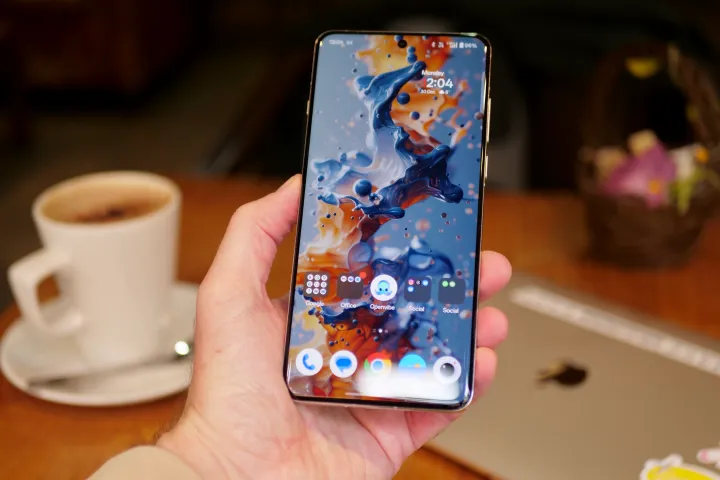
With the OnePlus 13, the company moves away from the curved display we saw on the OnePlus 12. Despite the change, the size and resolution remain unchanged. According to official specs, the OnePlus 13 has a 6.82-inch screen with a 1440 x 3168 pixels resolution. The display is rated for 4,500 nits of peak brightness (or brightness per pixel) and a global brightness of 1,600 nits (when measured across the display), and these figures remain unchanged from last year. This is an LTPO display that supports a variable refresh rate ranging from 1Hz to 120Hz. Safe to say, it’s excellent, having been awarded DisplayMate’s first ever A++ rating.
The display also supports Dolby Vision for viewing HDR content. You can still use the display with wet hands — as you could with the OnePlus 12 — and the phone also has a “glove mode” which lets you interact with the screen from under the thick layers of fabric. The latter is something that Sony dabbled with more a decade ago on phones such as the Xperia Sola, but the functionality never took off.
It also features an upgraded ultrasonic fingerprint scanner, which is faster than an optical scanner and does not require the screen to be lit up for scanning your fingerprint. OnePlus claims it upgraded the display with improved PWM dimming features to protect eyes when you use the phone at night. Meanwhile, the phone notably ditches Gorilla Glass for a “Ceramic” protective shield, but we can’t say we noticed much difference in our review.

The Galaxy S25 Ultra is also reported to have only a few changes to the display. First off, the dimensions and the resolution, just like those of the OnePlus 13, remain unchanged from last year. The Galaxy S25 Ultra is rumored to feature a 6.86-inch display with a 1440 x 3120 pixels. However, Samsung is expected to trim down the bezels, which could reduce the overall width marginally.
Confirmed with materials suppliers that the S25 Ultra will use M13 rather than M14 materials for cost reasons.
— Ross Young (@DSCCRoss) October 25, 2024
This is also an LTPO display with a variable refresh rate up to 120Hz. Samsung is said to be using the same panel for the Galaxy S5 Ultra as it did with the S24 Ultra, which means we may not see a significant jump in brightness. That, however, isn’t a reason for remorse as the Galaxy S24 Ultra also offers fairly bright displays, with a tested peak (global) brightness of nearly 1,500 nits and peak (over a small section) of 2,600 nits.
These displays also had weird issues last year, so we hope Samsung fixes any glitches proactively instead of relying on a software update delivered after the phone’s launch.
You will unlikely see any difference unless viewing Netflix or HBO Max. This is because Samsung phones only support HDR10+ and not Dolby Vision, and the content downgrades to just HDR10. We have a technical explainer if you are intrigued to learn more. However, apps besides Netflix should work equally well on both displays, since major providers like Apple TV, Amazon Prime Video, and Disney Plus support both HDR10+ and Dolby Vision.
Lastly, Samsung may stick with Gorilla Glass Armor as its choice of protection since Corning, the company behind Gorilla Glass, has yet to announce a new version.
OnePlus 13 vs. Galaxy S25 Ultra: performance
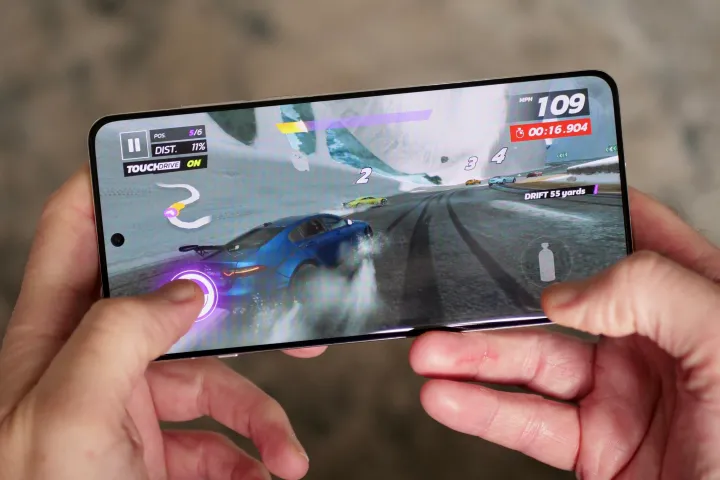
Both the OnePlus 13 and the Galaxy S25 Ultra are expected to feature Qualcomm’s latest Snapdragon 8 Elite chipset. While the non-Ultra models of the Galaxy S25 series may be powered by Samsung’s own Exynos 2500 processor in certain regions, all models, including the Ultra, are expected to feature Qualcomm chipsets, at least in the U.S., as per the latest leak.
The Snapdragon 8 Elite is more than a mere successor to the Snapdragon 8 Gen 3. Firstly, because it is a 3nm chip instead of a 4nm chip (which is actually a more efficient form of 5nm), the 8 Elite is expected to be far more efficient. Secondly, this is the first time Qualcomm is pulling an Apple move and allocating Oryon cores, previously limited to Qualcomm’s Snapdragon X series chips meant for laptops. The latest chipset also lacks any low-power efficiency cores and solely packs eight Oryon cores — in clusters of two and six at varying clock speeds. The actual difference in performance between the two devices, therefore, will depend on the software optimization from the companies and any additional hardware they add to reinforce performance and/or efficiency.
How does it fare in OnePlus’s latest? Now we’ve had time with the OnePlus 13, we can say for certain: It’s very, very good. It’s comparable to other Snapdragon 8 Elite smartphones, even if it doesn’t manage to exceed them, but that just means it’s comfortably sat with the best in the pack — which no-one should be upset about.
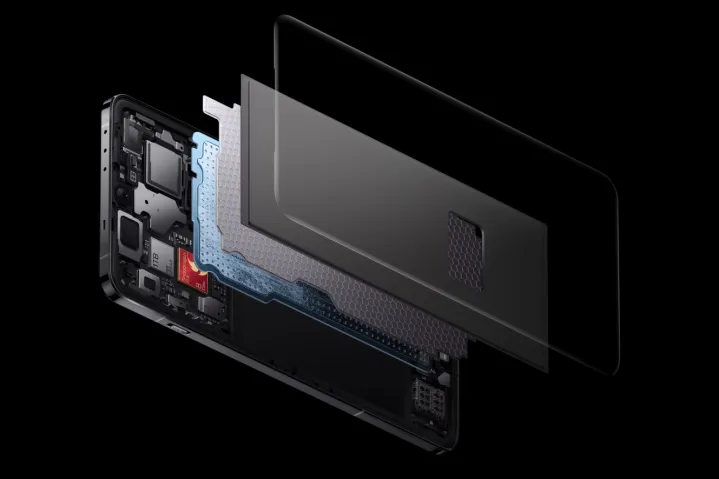
OnePlus has been using measures such as a multilayer vapor cooling chamber to keep heat generation under check for several generations now. This year, OnePlus claims the total surface area of the mechanism has been increased by almost 13%, which, along with a better microarchitecture of the chipset, should lead to improved heat dissipation. The phone can run a little hot under very challenging games, but it doesn’t extend to the back of the phone — though you may want to avoid the phone’s frame in those circumstances, which got noticeably warm.
Samsung, on the other hand, has been less bullish on touting numbers like OnePlus, but it upgraded the vapor chamber on the Galaxy S24 Ultra to be twice as big as that of the previous generation. This year, it might increase the surface area some more, though this is purely supposition, and we have yet to hear any solid rumors on this matter.
OnePlus is offering three RAM and storage configurations, including a top-end variant with 24GB of RAM and 1TB of storage. The other two options are 12GB+256GB and 16GB+512GB. Meanwhile, Samsung is expected to offer 16GB RAM as standard across all storage options — 256GB to 1TB.
OnePlus 13 vs. Galaxy S25 Ultra: battery and charging
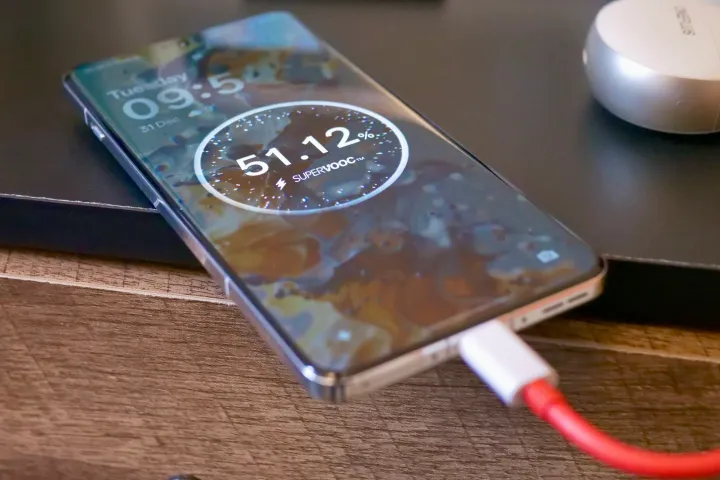
OnePlus has upped the battery capacity from 5,400mAh on the OnePlus 12 to 6,000mAh on the OnePlus 13 — while also managing to reduce the weight of the phone. It’s a seriously large battery, and it provides the goods. We found it didn’t often dip under 70% after a day of use, meaning it’s easily capable of lasting for two or even three days on a single charge. That’s an exceptional performance from the Chinese brand. Even with a relatively tough day of four hours of screen time, it still ended the day around 50% capacity.
For charging, OnePlus retain 100 watts of fast wired charging, which is limited to 80W in North America due to the 120V supply. The charging speed is fast enough to refuel the battery in about 45 minutes. However, for these speeds, you will need to use the OnePlus charger included in the box, or a charger for any other previous OnePlus device.
The OnePlus 13 also supports 50W wireless charging through OnePlus’ own AirVOOC chargers. With a standard Qi charger, the phone could be charged anywhere between 5W and 10W. There’s no Qi2 support, which means OnePlus 13 will also lack support for magnetic attachments. However, OnePlus has announced official magnetic cases that will let you mount the OnePlus 13 on any MagSafe-compatible charger or accessory. The company has also launched a new AirVOOC wireless charger that attaches magnetically to the back of the phone and cools it using a built-in fan. However, there’s a weird addendum to OnePlus’ wireless charging, and that’s the odd sliver of plastic it includes with the Sandstone, Aramid Fiber, and Wood Grain official cases. This additional bit of plastic is meant to ensure the phone charges wirelessly, and it’s a bit of an admission of fault on OnePlus’ part.

Samsung is rumored to stick to the 5,000mAh battery pack. The charging speed is also the same as last year, which means Samsung will support charging speeds up to 45W. Despite slower speeds, it does get an advantage due to the fact that it uses a universal charging standard — PPS — and can accept current at faster rates from a wider range of chargers, which is a boon since Samsung does not include a charger in the box.
The Galaxy S25 Ultra also gets wireless charging and is rumored to support the Qi2 standard, which should translate to faster wireless charging speeds (up to 15W) with the right charger and support for magnetically attaching peripherals.
OnePlus 13 vs. Galaxy S25 Ultra: camera
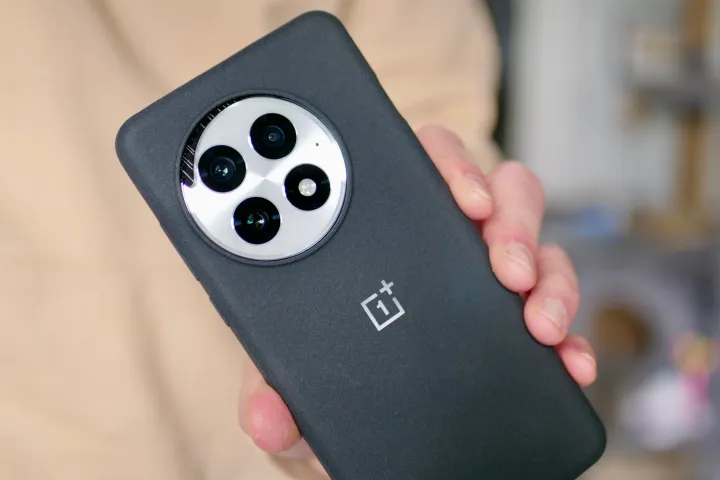
The OnePlus 13 rocks triple rear cameras, of which the primary camera remains the same from the previous generation. It has a 50-megapixel Sony LYT-808 sensor with an f/1.6 aperture. Meanwhile, the other two rear cameras have been upgraded. Both the ultrawide and the 3X telephoto cameras now use 50MP sensors, which are physically bigger than those of the previous generation, which should allow for slightly better lighting in pictures in different scenarios. Meanwhile, OnePlus sticks to a 32MP selfie camera instead of changing it.
It’s a very solid camera system, and we were impressed with it during our review period. Of particular interest is the hybrid 6x zoom, which is of a very high quality, despite its hybrid nature. You often have to really search to find evidence of the digital zoom and enhancement, and most of the time, it passes for an optical zoom.
All the lenses get colors inspired by the camera brand Hasselblad. Because of the improved processor, the primary camera can now shoot videos at 8K resolution and 30 frames per second (fps) instead of 24 fps previously. Meanwhile, the front camera gets 4K recording at 60 fps. However, an option to record 4K videos at 120 fps is still missing, even though phones such as the Vivo X200 Pro have adopted it.

The Galaxy S24 Ultra is also slated to get updated cameras. While the primary camera’s resolution remains unchanged at 200MP, it is rumored to have better image processing. The ultrawide camera gets a significant upgrade from 12MP to 50MP, while the 3x telephoto is expected to gain a new “1/3-inch” sensor while offering the same 10MP resolution. The 50MP periscopic telephoto with a 5x optical zoom and the front camera are likely to remain unchanged from last year.
Like the OnePlus 13, the Galaxy S25 Ultra should also gain the ability to shoot 8K videos at 30 fps. The Galaxy S24 Ultra already allows 4K videos at 60 fps, so the S25 Ultra should have it too. Both phones can shoot videos with their respective supported HDR codecs that we discussed in the display section above.
One thing to point out is that while Samsung’s selfie camera comes with autofocus, OnePlus uses a fixed-focus camera, which may lead to Samsung getting better selfies.
OnePlus 13 vs. Galaxy S25 Ultra: software and updates
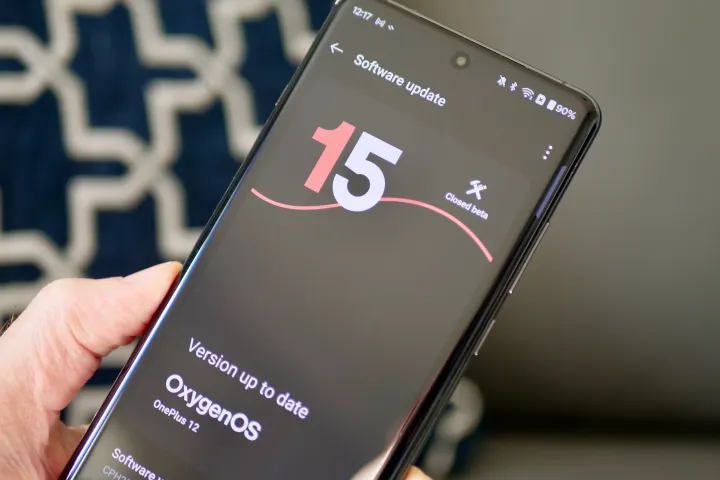
The OnePlus 13 runs on OxygenOS 15, based on Android 15, which brings several visual improvements to phones, including better theming options, iPhone-style lock screen wallpapers, quick settings customizations, and more fluid animations. Like every other phone of this and last year, AI is heavily at the forefront. It’s all stuff we’ve seen before, like AI Notes, Circle to Search, Google Gemini, and AI Replies, which is a little disappointing. However, OnePlus also includes its own non-AI features which are worth seeking out, like Zen Mode, Quick Launch, and a kids mode.
The OnePlus 13 is promised to get four major Android updates and five years of security updates.

The Galaxy S25 Ultra is expected to come with One UI 7, also based on Android 15. The interface has just been released in a limited beta only for the Galaxy S24 series, and is expected to be announced officially upon the launch of the Galaxy S25.
One UI 7 also brings a host of new visual changes, including new icons, an improved Camera app, and a multipurpose “Now Bar,” which offers controls similar to the iPhone’s Dynamic Island, but sits at the bottom of the lock screen. Along with these features, Samsung has a vast suite of AI features. Even though many of them, such as Circle to Search, are now reaching other Android devices, Samsung still has an advantage. Samsung offers features such as AI-assisted writing tools and live translations during calls, which have yet to become mainstream among all Android devices.
In addition, Samsung promises longer software support than OnePlus, offering seven years of software updates across its flagship lineup. Samsung also supports DeX, which lets you enjoy a PC-like experience by plugging your phone into a screen. If you value experience over hardware, the Samsung may be a better choice.
OnePlus 13 vs. Galaxy S25 Ultra: price and availability
The OnePlus 13 is already available via open sale on Amazon and OnePlus’ online store. The upgrades entail an increase in price, with the OnePlus 13’s 12GB/256GB model priced at $900. Meanwhile, the 16GB/512GB variant will be available for $1,000.
While Samsung has yet to announce the Samsung Unpacked 2025 event, leaks suggest Samsung is geared to launch the Galaxy S25 series on January 22. Meanwhile, the preorders are expected to start on January 24, with sales likely to start in the first week of February.
OnePlus 13 vs. Galaxy S25 Ultra: verdict

With each passing year, OnePlus has convincingly become more premium. With the OnePlus 13, it feels like it belongs to the same clique as other high-end flagships, including the iPhone 16 Pro and the Galaxy S24 Ultra. With features such as an IP69 rating, an ultrasonic fingerprint scanner, a massive 6,000mAh battery and super-fast charging, the OnePlus 13 appears to be a highly compelling choice. Despite these features, you can get the base variant under $1,000.
Meanwhile, the Galaxy S25 Ultra could be a better choice if you want an S Pen, travel with multiple devices, but use the same charger, or can’t do without a more capable telephoto setup than a now-typical 3x telephoto. Samsung also gets an edge in terms of the number of updates.
While the differences pointed out in this article are clear, it is too soon for us to give you a verdict on which is a better phone. The intention of this article is to prime you for the competition between these upcoming devices. We shall update this article once we learn more substantial details about the Galaxy S25 Ultra.




